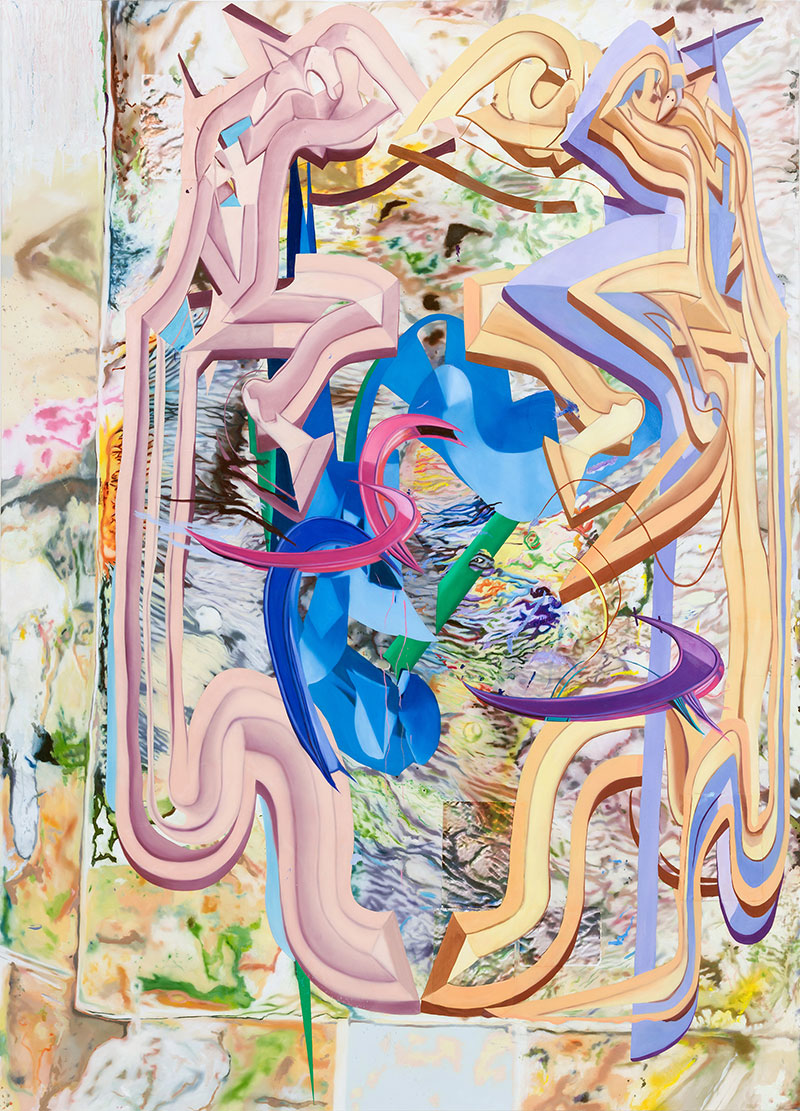Your cart is currently empty!
Rives Granade

Looney Toons, Leger, Lewitt, and Kandinsky battle it out for aesthetic prominence across these epic and absolutely eccentric new paintings and sculptures by Rives Granade. Abstract forms, deracinated texts, and schematic signifiers festoon the gestural grounds of his tumultuous pictorial spaces, which are animated not only by optically affecting color stories, but also a panoply of eclectic styles deployed in a lively Postmodern pastiche. Although mostly offering abstractionist painting, in their comfort with optical paradoxes and extreme simultaneity, they explicitly refer to the post-Internet world of digitally-fueled visual onslaught.
The smaller paintings tend to have something more like a central figure, set in a quasi-portraiture orientation, while the larger works present as sweeping, bifurcated landscapes and psychedelic topographies. All are constructed by layering a multiverse of stylistic modes and visual languages encoded by both art history and popular culture. Freewheeling, painterly backgrounds are laid down only to be obscured by subsequent lines, textures, words, and a cast of anthropomorphic and zoomorphic characters rendered in crisp rounded dimensionality that approaches candy-coated realism in a way specific to the cartoon world. Elsewhere Granade handles paint in deft atelier fashion, with gradients and economies of scale, quick intuition, small-bore problem-solving and large-scale orchestration.

Sourcing from autotrace software gives some of the painted imagery a sort of Egyptian hyperstylization, flattened rather than dimensional, and often directly juxtaposed with fully modeled elements derived from the look of 3D graphics programs. Likening the effect to the jarring poetry of graffiti along the edge of a billboard, Granade is not only having a conversation about painting and perception, but also authorship and messaging—and the confluence of the languages specific to each, like a reconstructed Babel. In fact advertising and marketing tropes make appearances as kinds of imagery as well—from corporate logos to exotic product packaging texts, some in other alphabets.
In works like Linda Flora (2016), monumental shapes pierce each other and interlock in an illusionistic malleability, which together with an amped-up palette creates pictorial depths of field that link the foreground and receding ground, while also extending outward from the picture plane and seeming to intrude into ours. It’s almost a sculptural illusion, and in fact Granade does make sculptures in metal as well. Two large metal floor sculptures that combine abstract shapes, positive and negative space, and words which form something called glass door ambigrams, in which words read in two directions, in this case through and reverse. These are Love Hate and Boy God (2017). They are physically punctured and pierced in ways similar to the objects in the paintings appear to be, and also share a lexicon of shapes and colors. They play a crucial role in the exhibition installation, adding to the rollicking conversation about flatness, depth, gesture, text, and color that plays out in the paintings.